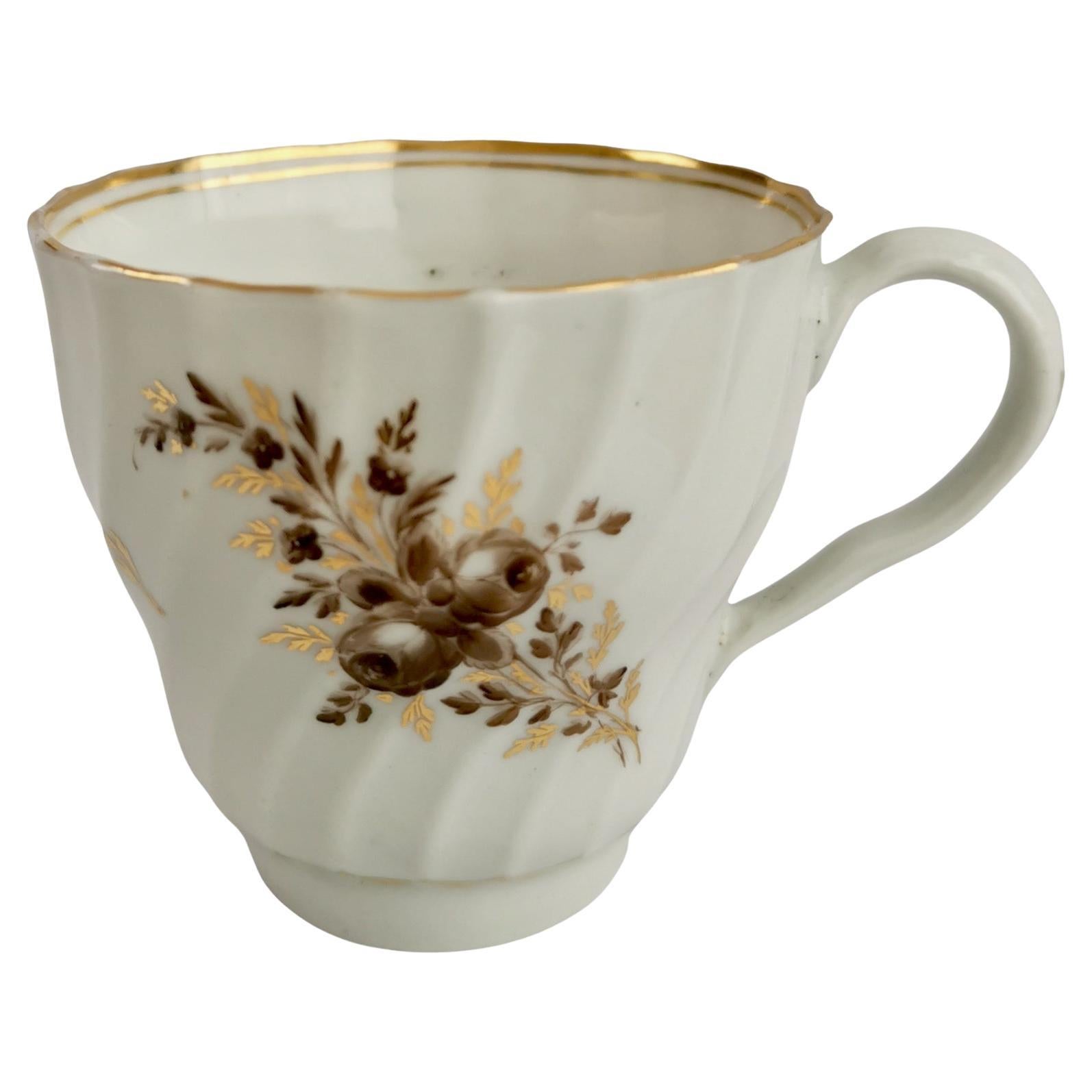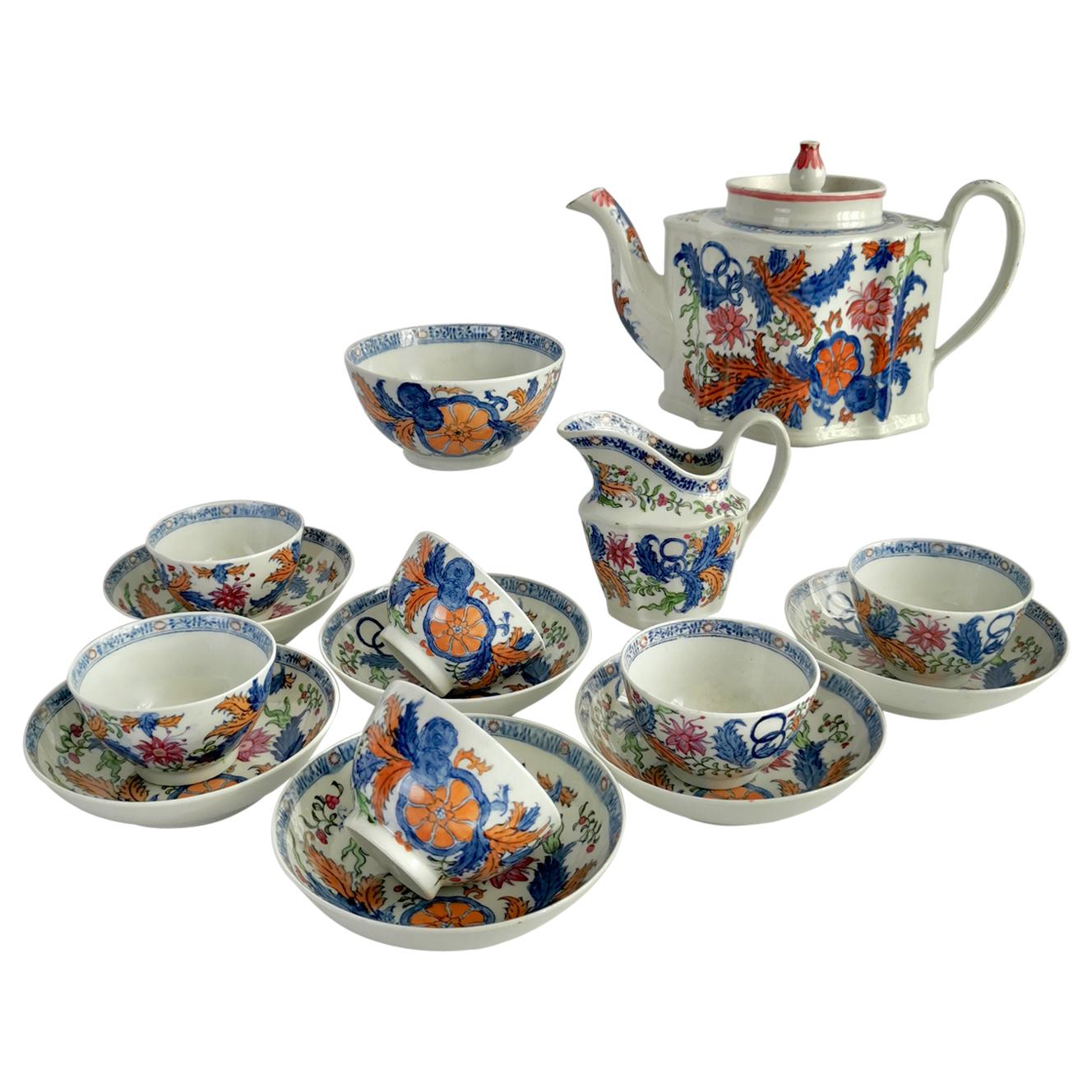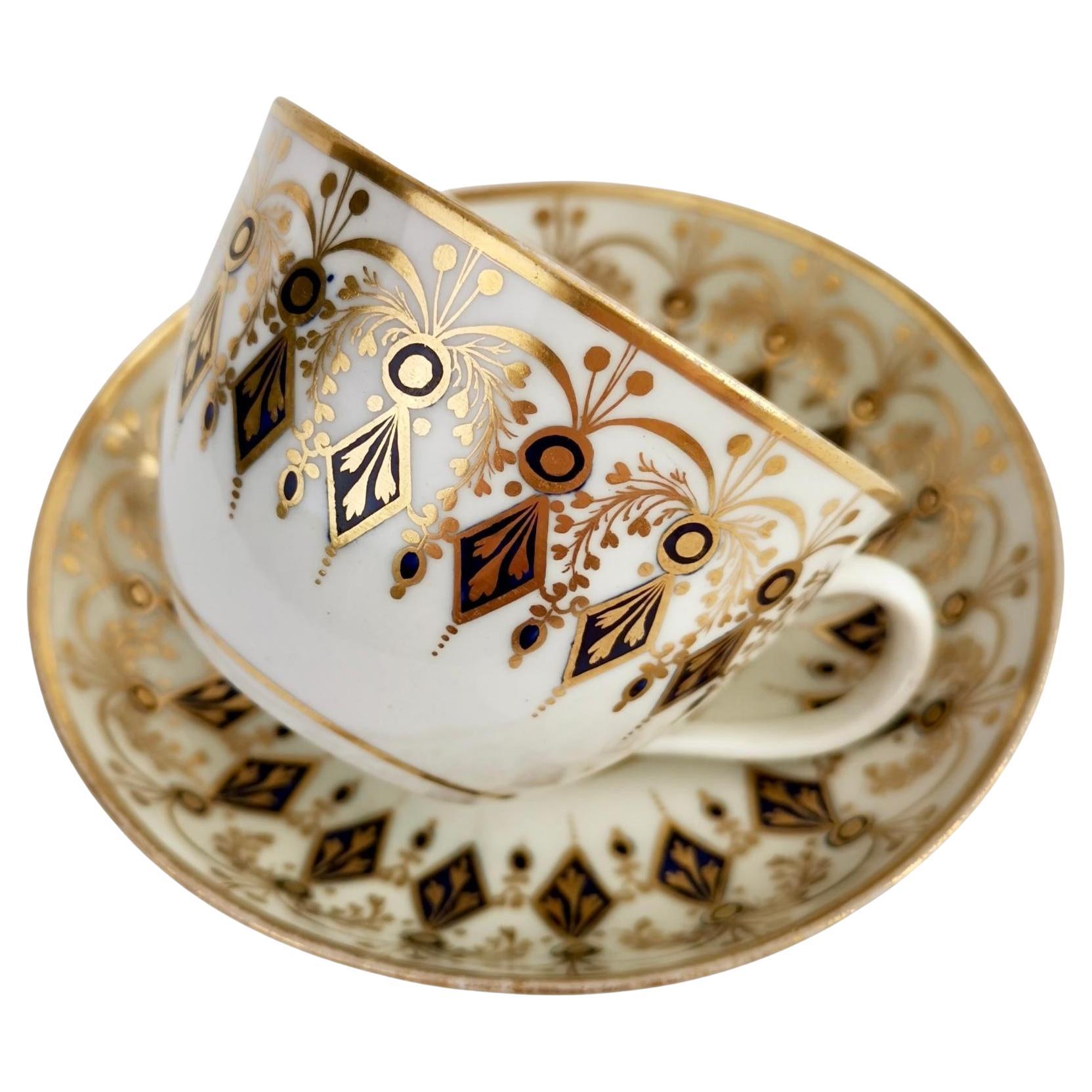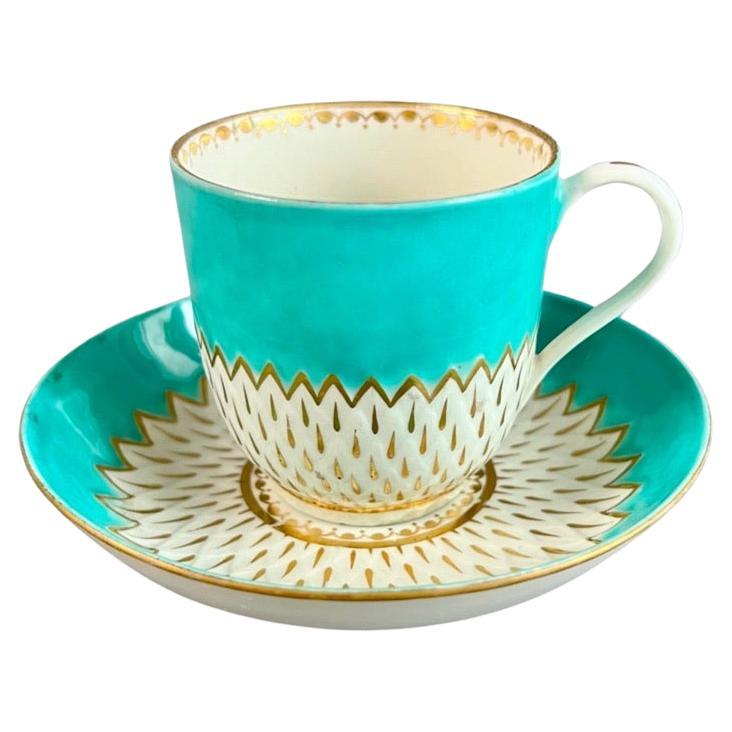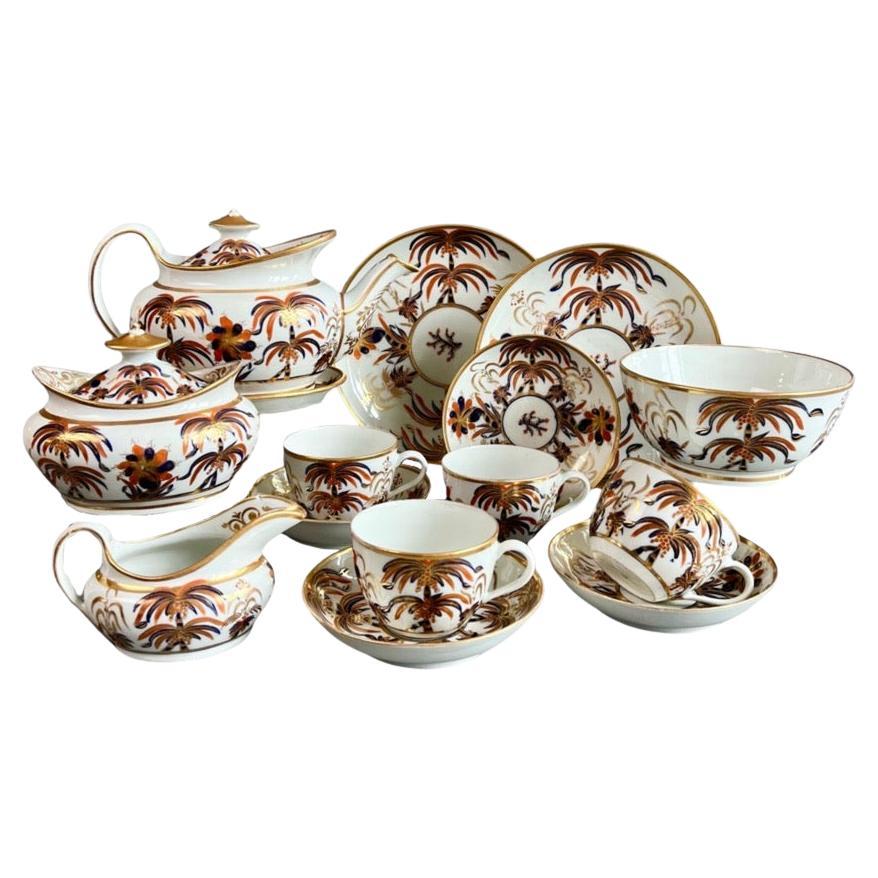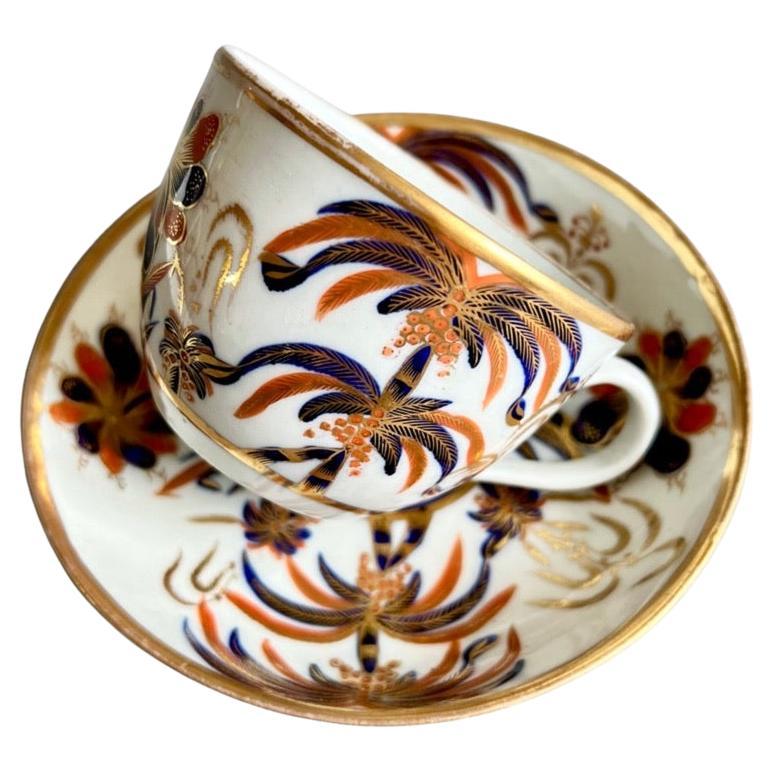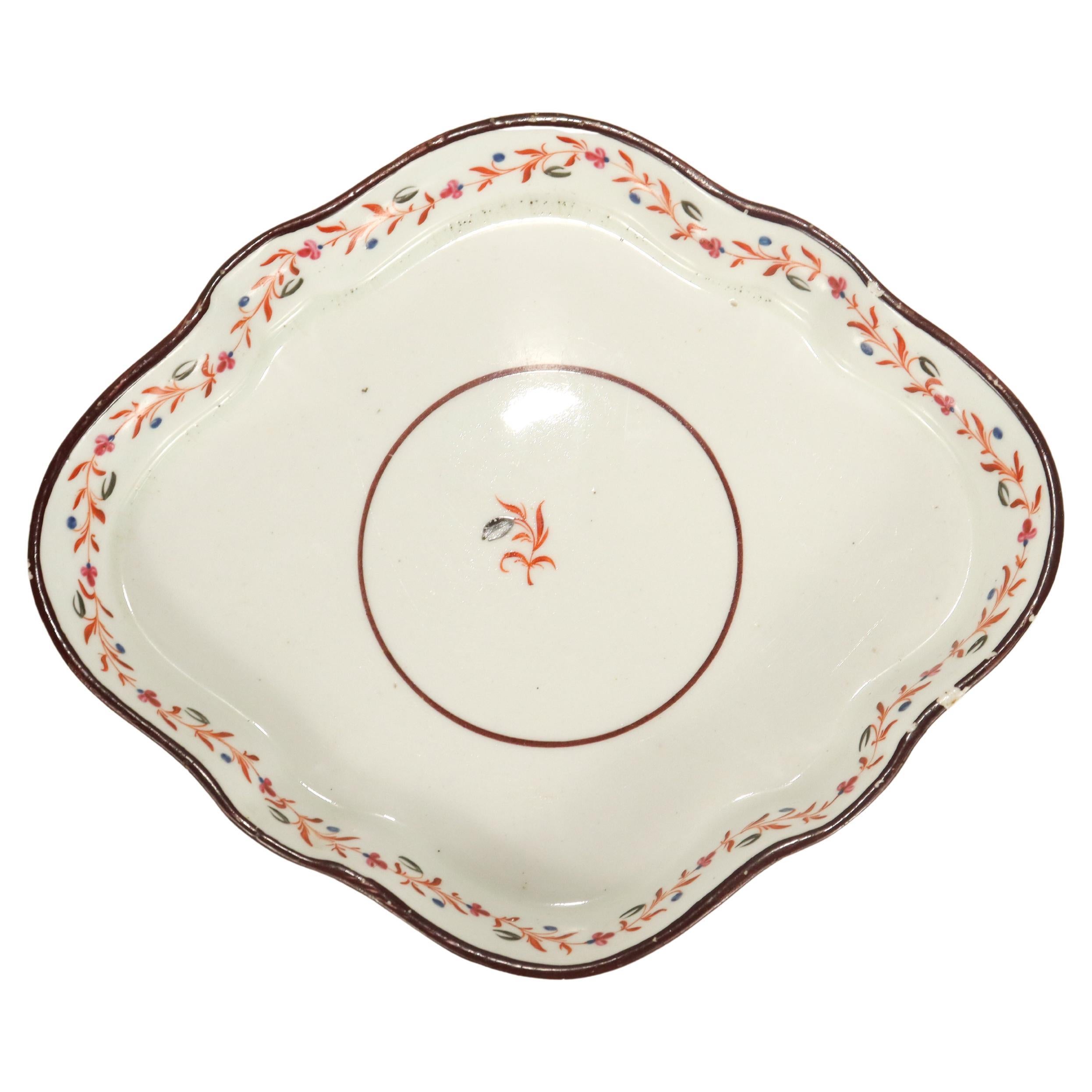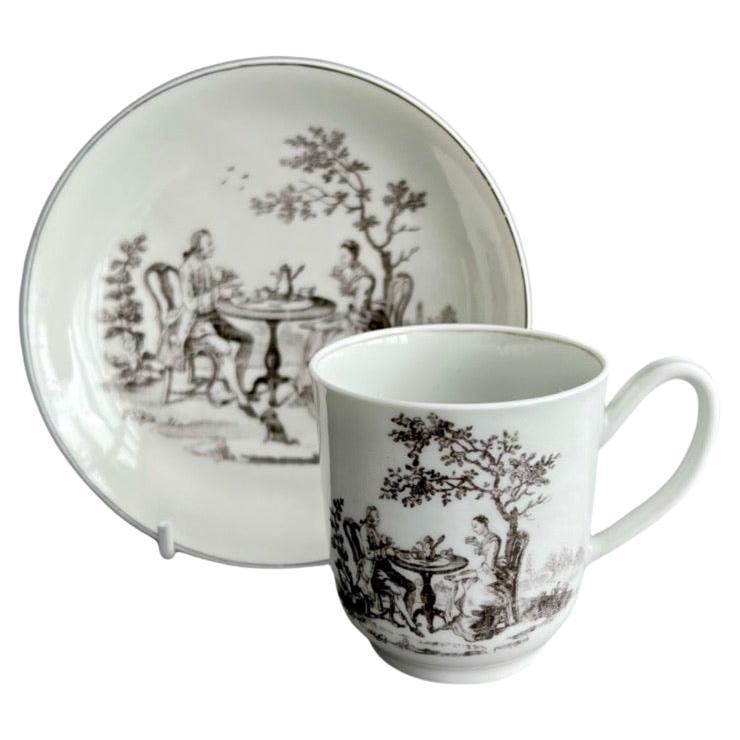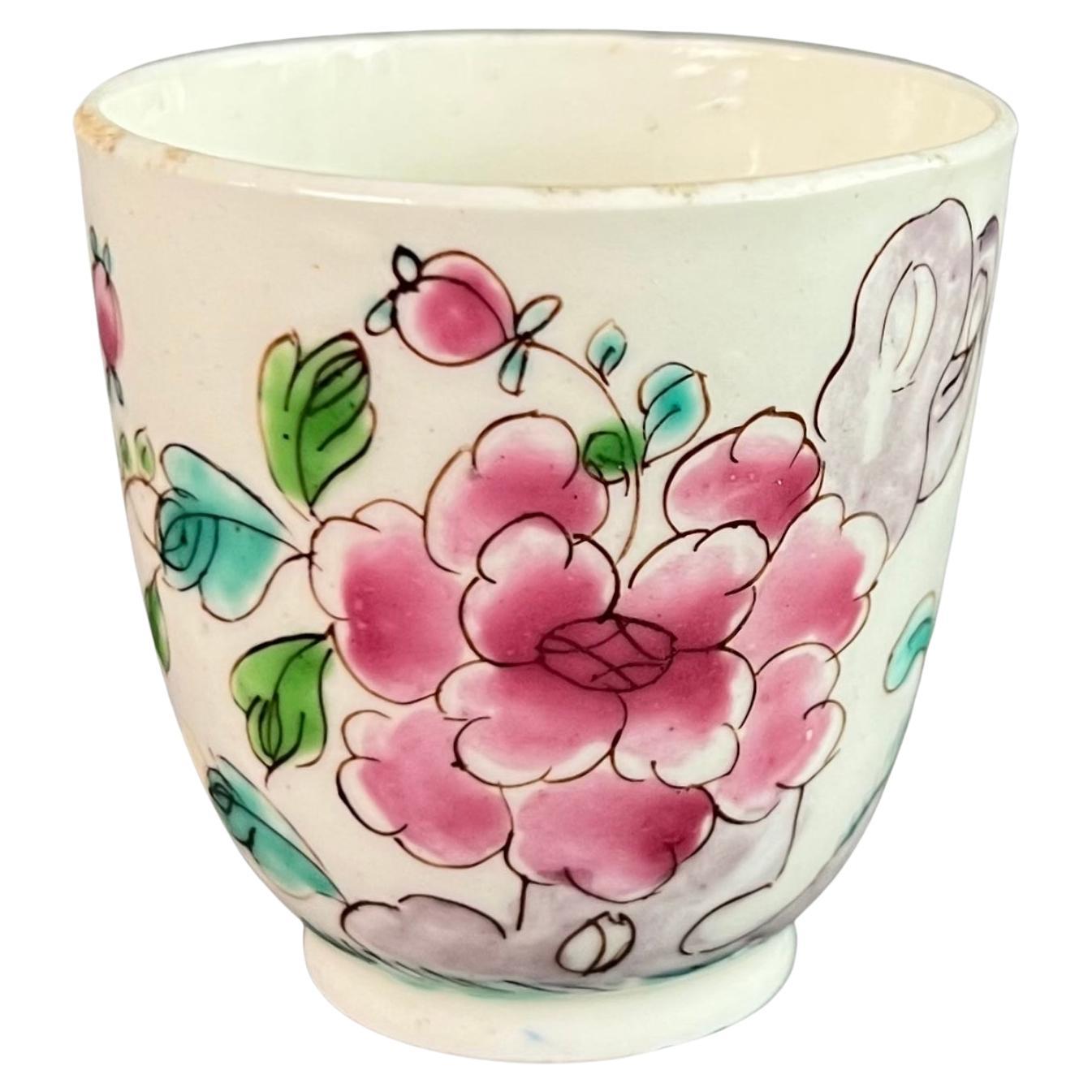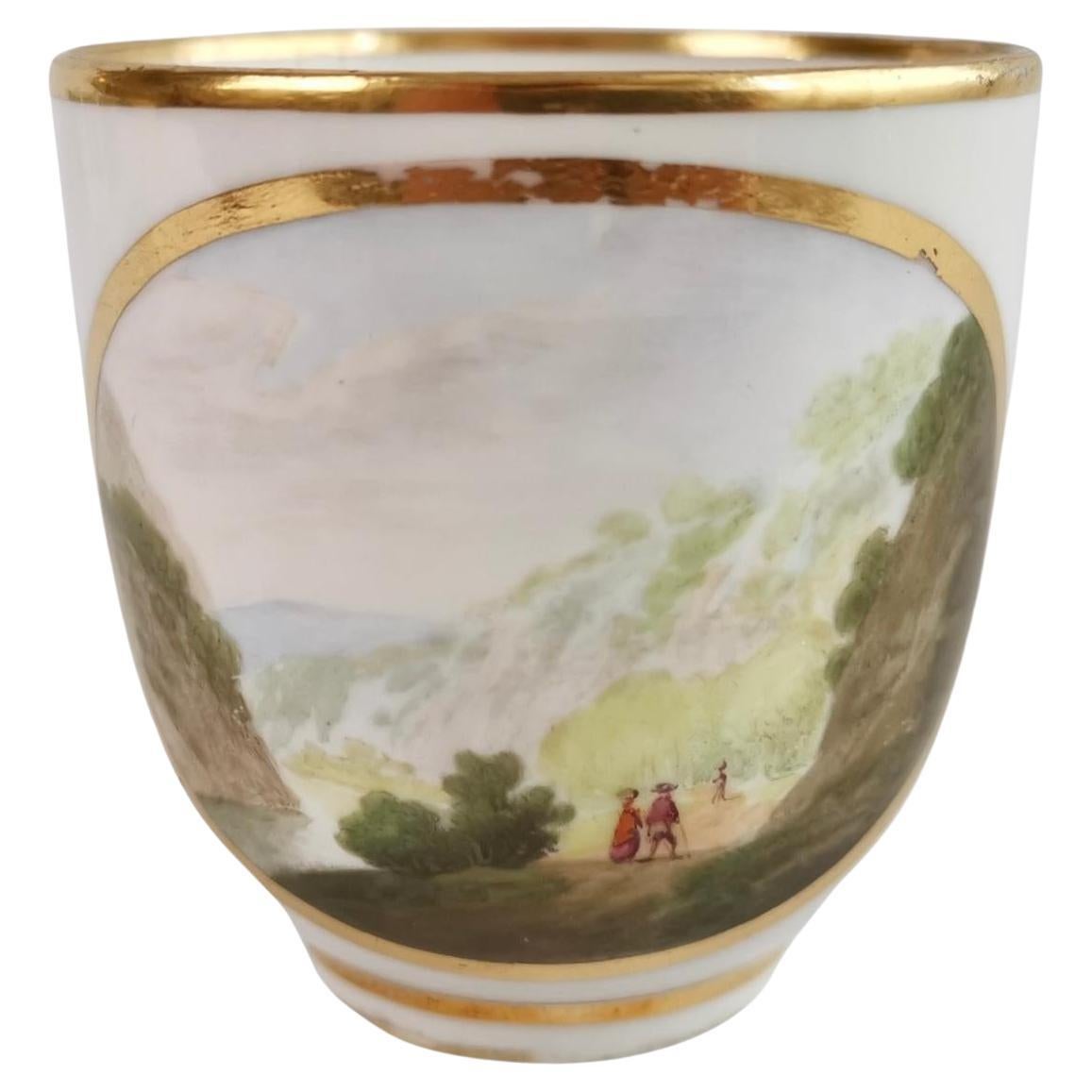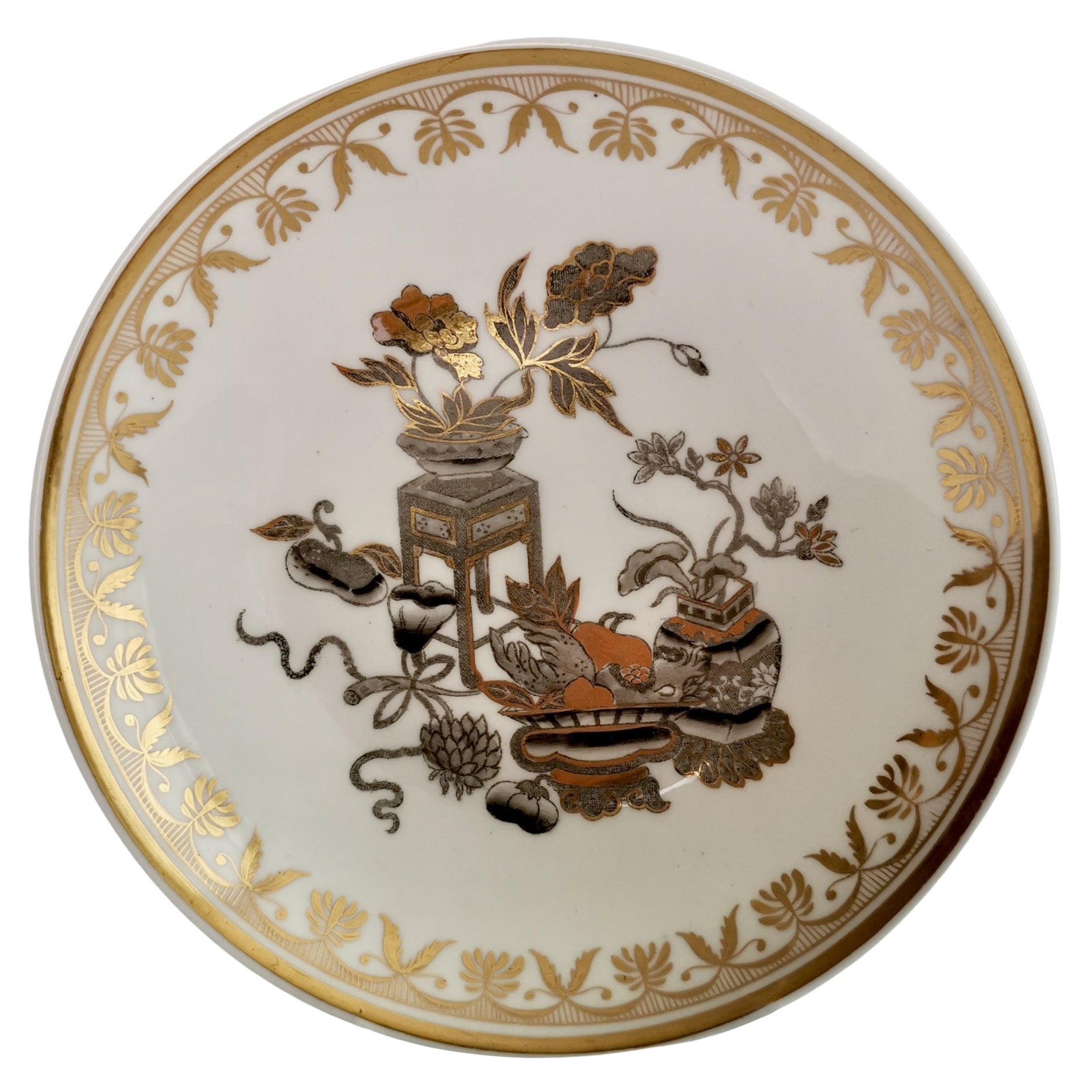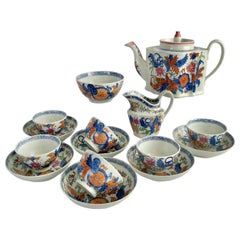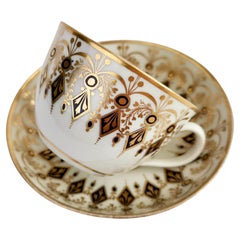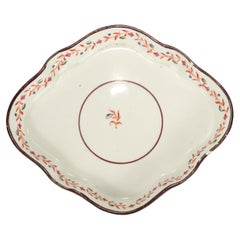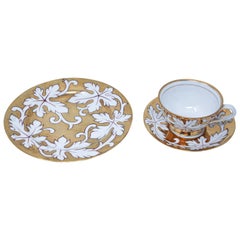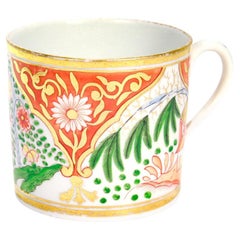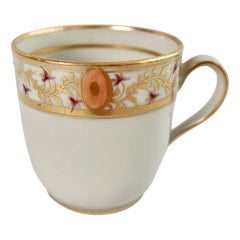
New Hall Orphaned Porcelain Coffee Cup, White with Gilt, Georgian, ca 1795
View Similar Items
Want more images or videos?
Request additional images or videos from the seller
1 of 13
New Hall Orphaned Porcelain Coffee Cup, White with Gilt, Georgian, ca 1795
About the Item
- Creator:New Hall (Maker)
- Dimensions:Height: 2.6 in (6.61 cm)Diameter: 2.5 in (6.35 cm)
- Style:George III (Of the Period)
- Materials and Techniques:
- Place of Origin:
- Period:1790-1799
- Date of Manufacture:circa 1795
- Condition:Wear consistent with age and use. In perfect antique condition without any damage, repairs, crazing or significant wear.
- Seller Location:London, GB
- Reference Number:Seller: A-NEW311stDibs: LU4805124021792
About the Seller
5.0
Platinum Seller
These expertly vetted sellers are 1stDibs' most experienced sellers and are rated highest by our customers.
Established in 2016
1stDibs seller since 2019
208 sales on 1stDibs
Typical response time: 1 hour
More From This SellerView All
- Chamberlains Worcester Orphaned Coffee Cup, Sepia Flower Sprays, Georgian ca1795By Chamberlains WorcesterLocated in London, GBThis is a beautiful orphaned coffee cup made by Chamberlains Worcester in about 1795. The cup has a spirally fluted or shanked shape and is decorated...Category
Antique 1790s English George III Tea Sets
MaterialsPorcelain
- New Hall Porcelain Tea Service, Chinoiserie Flower Sprays, Georgian, circa 1795By New HallLocated in London, GBThis is a stunning tea service made by New Hall in circa 1795. The service is made of hybrid hard paste porcelain and decorated in a bold Chinoiserie pattern of large flower sprays. The service consists of a teapot with cover, a milk jug, a slop bowl, and six tea bowls with saucers. This service has provenance; it came from the collection of David Redstone, the well known porcelain expert who wrote leading books on Bow and Chelsea porcelain. The New Hall factory started as a cooperative of several Staffordshire potters making use of the porcelain license of Bristol Porcelain...Category
Antique 1790s English George III Tea Sets
MaterialsPorcelain
$2,900 / setFree Shipping - New Hall Hybrid Paste Porcelain Teacup, Neoclassical Cobalt Blue Gilt, ca 1810By New HallLocated in London, GBThis is beautiful teacup and saucer made by New Hall around the year 1810. The set is in decorated in the sophisticated Neoclassical style of the Regency era. We also have an entire tea service in the same pattern available, please see separate listing. The New Hall factory started as a cooperative of several Staffordshire potters making use of the porcelain license of Bristol Porcelain...Category
Antique 1810s English Regency Tea Sets
MaterialsPorcelain
$395 / setFree Shipping - Derby Porcelain Coffee Cup, Artichoke Pattern in Turquoise, Georgian ca 1785By DerbyLocated in London, GBThis is a beautiful coffee cup and saucer made by Derby in about 1785. The set has the distinctive "artichoke" moulding and a bright turquoise ground with the white artichoke surface...Category
Antique 1780s English George III Tea Sets
MaterialsPorcelain
- New Hall Hybrid Hard Paste Porcelain Tea Service, Palm Tree patt. 484, ca 1810By New HallLocated in London, GBThis is a spectacular 17-piece tea service serving four, made by New Hall around the year 1810. The service consists of a teapot with cover on a stand, a sucrier with cover, a milk j...Category
Antique 1810s English Georgian Porcelain
MaterialsPorcelain
$4,150 / setFree Shipping - New Hall Hybrid Hard Paste Teacup, Palm Tree patt. 484, Georgian ca 1810By New HallLocated in London, GBThis is a beautiful teacup and saucer made by New Hall around the year 1810. The set is decorated in the very desired but rare palm tree pattern with the number 484. We also have a ...Category
Antique 1810s English Regency Tea Sets
MaterialsPorcelain
You May Also Like
- Antique English Shaped New Hall Porcelain Teapot TrivetBy New HallLocated in Philadelphia, PAA fine antique English porcelain teapot trivet. Attributed to New Hall. In a diamond-shaped form. With a single red & black...Category
Antique 18th Century English Georgian Porcelain
MaterialsPorcelain
- Hand Painted Gilt Porcelain Tea, Coffee Cup with Desert PlateLocated in North Hollywood, CAFine gilt original porcelain coffee or tea cup with saucer and desert plate. Enjoy the start to your day with the classical sophistication of this fine p...Category
Late 20th Century French Bohemian Porcelain
MaterialsPorcelain
- Antique New Hall Porcelain Orange Imari House & Willow Variant Coffee Cup / CannBy Derby Porcelain, Barr, Flight & Barr Worcester, New HallLocated in Philadelphia, PAA fine antique English porcelain coffee cup (or cann). By New Hall. In a typical, cylindrical form with a ear shaped handle and an orange house & willow Imari pattern decoration. ...Category
Antique Early 19th Century George III Porcelain
MaterialsPorcelain
- Early Derby Porcelain Coffee Can att. to George Robertson, circa 1795By Derby, George RobertsonLocated in Fort Lauderdale, FLA green-ground porcelain coffee can made by the Derby Porcelain Factory circa 1795. This green-ground coffee can is a fine example of early Derby porcelain...Category
Antique 1790s English Georgian Porcelain
MaterialsPorcelain
$2,400 Sale Price25% Off - Georgian New Hall Porcelain Oval Teapot with Boy in Window Pattern 425, Ca 1802By New HallLocated in Lincoln, LincolnshireThis is a hard paste porcelain tea pot and lid by New Hall dating to very early 19th century, George 111rd period, circa 1800 / 1805. The Teapot is well potted with an oval shape and high loop handle. The decoration is hand-painted in bold enamels in a chinoiserie pattern called "Boy or Lady in the Window" and is pattern number 425, with an upper rim dot and line border. This is a recorded New Hall pattern. A similar Teapot in the same shape with a different pattern is illustrated on page 112 of the book: An Anthology of British Teapots by Philip Miller & Michael Berthoud published by Micawber Publications. The base has the pattern number 425 hand painted in burnt orange, on the inner foot rim. Please Note : This piece has damage which is not obvious when displayed and it displays very well. - please see item condition for details. Overall a beautifully decorated example of an early English, Georgian Teapot...Category
Antique Early 19th Century English Chinoiserie Ceramics
MaterialsPorcelain
- 12 Antique Berlin Kpm Arkadia Urania White Porcelain Tea Coffee Cups & CaseBy Berlin Royal Porcelain FactoryLocated in Dayton, OH"Set of 12 circa 1930s Königliche Porzellan-Manufaktur white porcelain Urania teacups. The Royal Porcelain Factory in Berlin (German: Königliche Porzellan-Manufaktur Berlin, abbreviated as KPM), also known as the Royal Porcelain Manufactory Berlin and whose products are generally called Berlin porcelain, was founded in 1763 by King Frederick II of Prussia (known as Frederick the Great). Its actual origins, however, lie in three private enterprises which, under crown patronage, were trying to establish the production of ""white gold"" (i.e. porcelain) in Berlin from the mid-18th century onwards. The company logo is a cobalt blue sceptre, which is stamped (painted prior to 1837) on every piece. All painted pieces produced by KPM are signed by the painter. KPM is still producing to this day; each piece of dishware and decorative porcelain is entirely unique. KPM has produced a number of dishware forms and porcelain figurines throughout its history. Some forms have hardly changed their shape in over 200 years of production. Frederick the Great, who, as the owner, jokingly referred to himself as his own ""best customer"", was under the spell of the Rococo style during his life; a culmination of this artistic style can be seen in his castles. To this day, the most successful designs of the 1930s are the Urbino, Urania and Arkadia (originally a tea set designed in honor of KPM's 175th anniversary) created by Trude Petri...Category
Vintage 1930s Tea Sets
MaterialsPorcelain
Recently Viewed
View AllMore Ways To Browse
Vintage New In
New And Made To Order
Coffee Cup Set
Antique Tea Cans
Antique Silver Hall Marks
Dining Set Georgian
British Georgian
White Tea Set
Antique Tea Sign
Coffee And Tea Cups
Antique Silver Tea Cups
White Fine Furniture Dining Set
Antique Glass Tea Cups
Antique Coffee And Tea
Antique Cup And Saucer Sets
Antique Original Georgian Glasses Georgian Glass
Antique Tea Cup Set
Tea Cup Hand Painted
